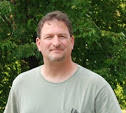Northern Virginia is not the best place to view the Milky Way Galaxy, but if you get 20-30 miles west of the city lights, you will be amazed at how much of the Milky Way you can see with the naked eye.
The following three pictures were taken at Crockett Park in Fauquier County, VA on a clear, moonless night on August 31st, 2008.
Picture: Milky Way 1 (Taken looking at the Southern horizon to about 25 degrees skyward)
Picture: Milky Way 2 (Taken looking midway between the Southern horizon and straight overhead)
Picture: Milky Way 3 (Picture taken looking straight overhead)
My primary goal that night was astrophotography, but I'll admit the exposure time on some astro photos ran much longer than I intended, because I was lost in daydreams, or in this case, nightdreams looking at the Milky Way.
For the record, the Milky Way Galaxy contains between 200-400 billion stars and is home to our solar system.
Our star 'Sol' (The Sun) is classified a G2 star, meaning it has a surface temperature of 5740 Kelvin (that's hot). Sol is one of 10 Million G2 stars in the Milky Way Galaxy.
Our solar system is not located in the center of the Milky Way, but rather on the edge of a small spiral band called the Orion Arm. You can equate that to the galactic center of the galaxy being downtown, and our solar system being in the distant suburbs.
The following picture is an artists conception of what the scientific community believes the Milky Way Galaxy looks like. Of course we cannot know for sure, because we live inside and cannot see an external view.
Recent estimates put the Milky Way at 100,000 light years (ly) in diameter and 1,000 ly thick, which means it would take a human 100,000 years traveling at the speed of light to traverse the galaxy from end to end. NOT GONNA HAPPEN!
With current technology, we can travel at a scant 20,000 Miles per Hour. To travel at the speed of light we would have to travel at 186,000 Miles per Second. Even at that speed it would take 1,333 human lifetimes to travel the galaxy end to end. Guess we're stuck with artists pictures of the Milky Way.
The spiral band seen in my pictures is the Orion Arm. The brightest star cloud in picture "Milky Way 1" points toward the galactic center of the galaxy. The Orion Arm blocks us from seeing glactic center with optical telescopes, however scientists have a better idea what the Milky Way looks like by measuring radio waves. Google 'Milky Way' to find a lot of great on our home galaxy.
We are very blessed to be located where we are in the Milky Way, because:
- If we were closer to the galactic center of the Milky Way we likely wouldn't exist because of massive doses of radiation preventing life (as we know it) from thriving. Too, the glare from the glactic center would keep us from seeing anything else in the universe.
- Since we are on the outer edge of the Orion Arm of the Milky Way we have an unobstructed view of many parts of the universe. Had we been located farther inside the Orion Arm, space dust and millions of bright stars would have impeded our view of the universe.
Hope you enjoyed my quick drive-by tour of the Milky Way Galaxy.
Clear Skies
Star Pilot
@
Friday, September 19, 2008
Milky Way Galaxy
Posted by
Star Geezer
at
5:29 PM
![]()
![]()
Labels: crockett park, Milky Way, milky way galaxy
Subscribe to:
Post Comments (Atom)



2 comments:
Pretty cool! I'm looking forward to the star party.
I am the sort of hombre who passions to try fresh things. Right now I am fabricating my personal photovoltaic panels. I am doing it all by myself without the assistance of my men. I'm using the net as the only path to acheive this. I discovered a very awesome site which explains how to build solar panels and wind generators. The internet site explains all the steps required to solar panel construction.
I am not exactly sure bout how correct the info given there is. If some guys over here who have xp with these works can have a look and give your feedback in the page it will be awesome and I'd really appreciate it, cauze I extremely would love to try [URL=http://solar-panel-construction.com]solar panel construction[/URL].
Tnx for reading this. You people rock.
Post a Comment